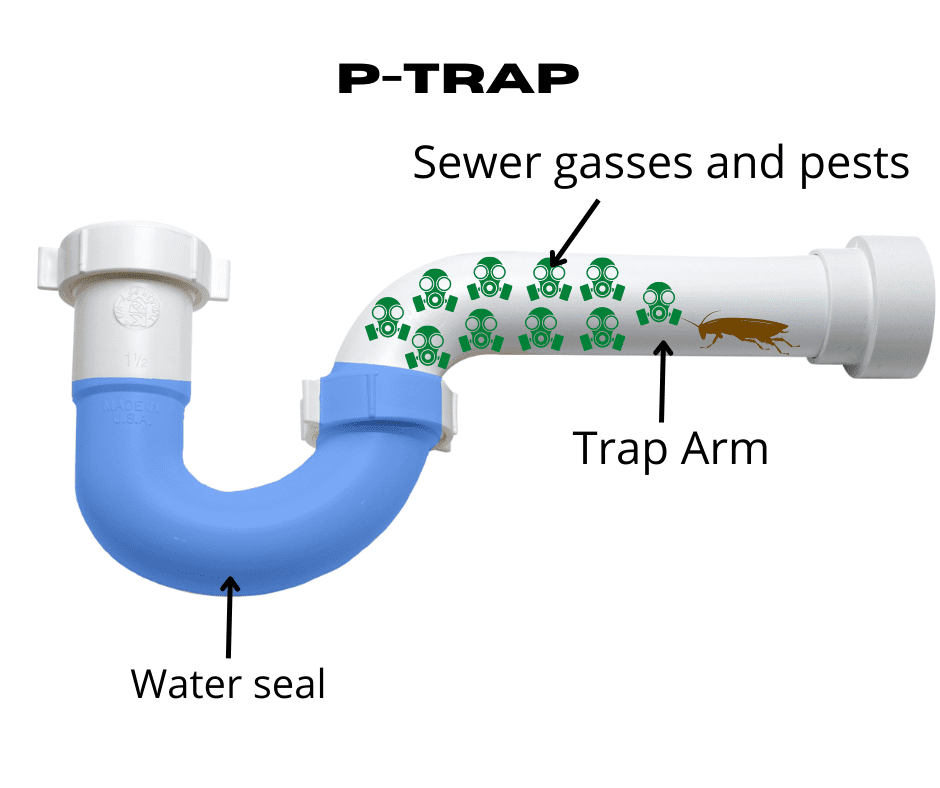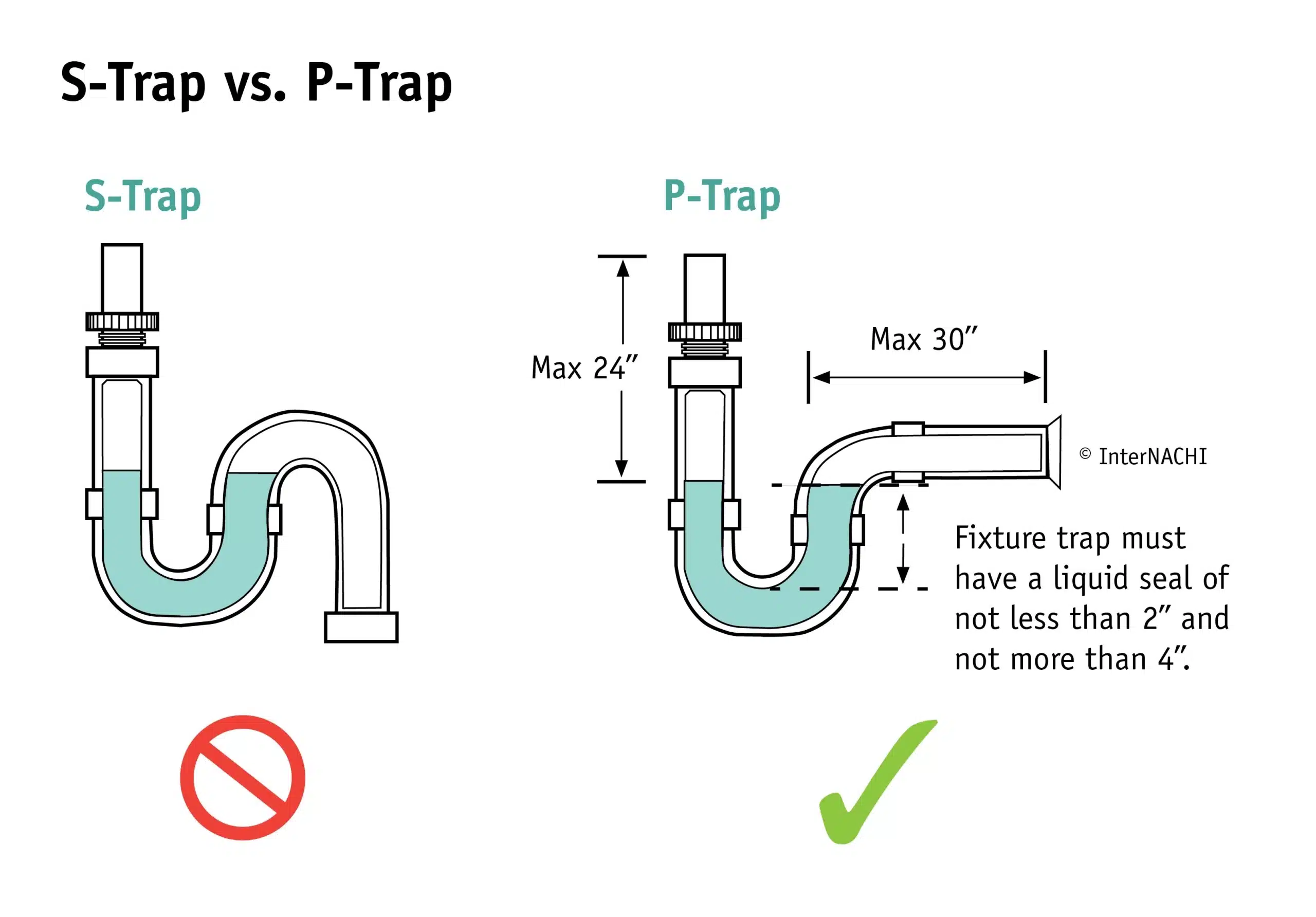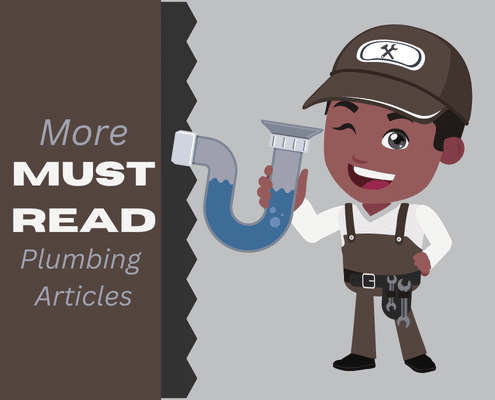4.8 1700+ Google Reviews

Many homeowners think that p-traps are for saving your wedding ring from going into the sewer system. However, the real purpose of a p-trap is to stop sewer gases from entering the home. Sewer gasses cause foul odors in your home and can make you sick.
A p-trap is the u-shaped bend in the plumbing pipe under a plumbing fixture. You will typically see them under bathroom kitchen sinks. Shower and tub traps are usually located in the floor under the shower. And toilets have their own integral traps.
The p-trap diagram below demonstrates how a p-trap works. P-traps work by holding water in a u-shaped pipe under a plumbing fixture. The water in the plumbing trap is called a water seal. This water seal stops sewer gasses (and pests) from traveling from the sewer line, into your home through fixtures such as bathroom sinks.
Instead, the sewer gasses go up your vent pipes and get discharged above your roof line.
Obviously, a dry p-trap will allow sewer gasses to move through the trap, and into the living space.

The technical term for the toxic component of sewer gas is hydrogen sulfide. Hydrogen sulfide is a naturally occurring byproduct from the bacterial breakdown of organic materials. In light concentrations, it can irritate your eyes or cause you to cough. However, in higher concentrations, it causes headaches, dizziness, or even death,
Non-toxic components of sewer gas include methane, carbon dioxide, and sulfur dioxide,
There are a few common p-trap problems that cause a dry trap.
The most common cause of a dry p-trap is an unused bathroom such as a guest bathroom. The water in a drain trap evaporates over time and if there is not enough water, sewer gasses can bypass the water seal. Pour mineral oil into the drain pipe to prevent evaporation of the water seal in the p-trap.
Another cause of dry traps is a plumbing leak. If you smell sewer odors in your bathroom, inspect the plumbing pipes for leaks.
Lastly, improper configuration or older style traps such as s-traps can cause dry traps. You should contact a professional plumber if you suspect one of these issues.
One of the most common issues with p-traps is that they clog. In addition to trapping water, they tend to trap debris, hair, and soap scum. If your fixture is slow draining, it likely has a clog.
The easiest way to clear clogs is with a flat plunger. First, create a seal by slowly pressing the plunger to the surface of the fixture. Second, make sure water is covering the seal. Finally, move the plunger straight up and down for about 20 seconds.
If that doesn't work, you'll need to use a drain snake. Check out the video below to learn how to use a drain snake.
Older homes have s-traps, and other obsolete traps, instead of p-traps. The biggest difference between p-traps and s-traps is that a p-trap has a horizontal trap arm that connects to a vent stack. On the contrary, an s trap does downward directly into the drain line.
The trap arm and vent stack for a p-trap create a vacuum break, that prevents the water seal from being siphoned out of the trap. Current building codes no longer allow s-traps.

Yes, p-traps are required by all modern building codes. IRC (International Residential Code) 3201.6 states “Each plumbing fixture shall be separately trapped by a water seal trap.
Also of note, IRC 3201.5 itemizes prohibited trap designs.
“The following types of traps are prohibited:
The plumbing system is designed to keep your home healthy and safe. In fact, in the early 20th century there was a popular poster that stated “The Plumber Protects the Health of the Nation. A p-trap is a specific piece of plumbing equipment. The purpose of a p-trap is to stop sewer gasses from getting into your home and making you sick. This simple u-shape piece of plumbing is arguably the most important part of the plumbing system.

What is the Purpose of a P-Trap?
Should You Replace Cast Iron Pipes?